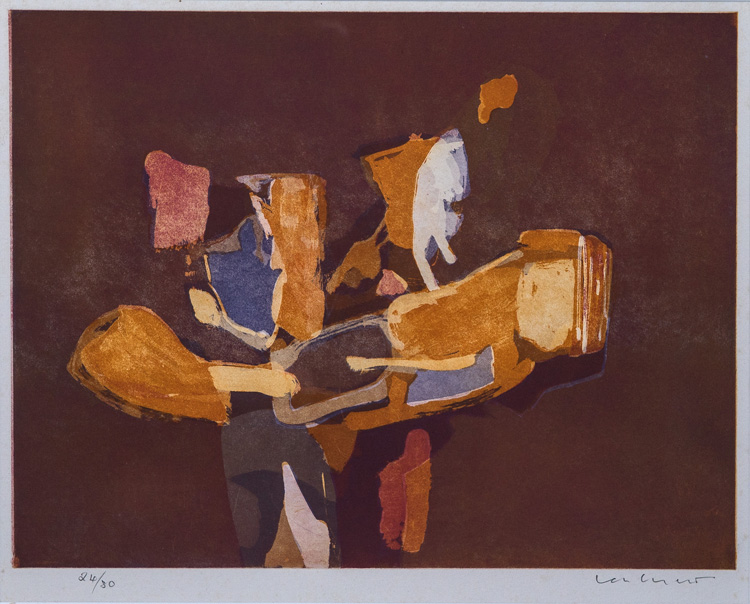
A Look Back at IMPRINT III: INTAGLIO A CREATIVE TEXT
There were quite a number of exhibitions held in the past month, and IMPRINT III: INTAGLIO A CREATIVE TEXT was certainly one to remember. In the following interview, artist-print maker Jesmond Vassallo and I discuss this memorable exhibition: its print collection, participants, theme, collaborators & more. For those who have missed it, iMprint III was held at Palazzo de La Salle’s exhibition halls (MSA), Valletta, between Nov 16th & Dec 9th.
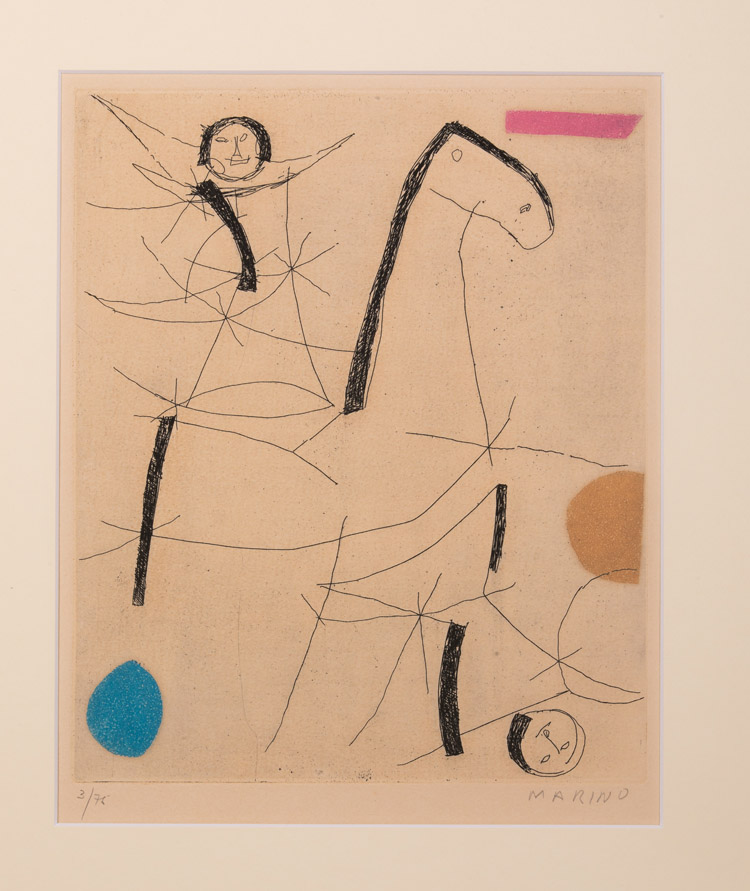
Marino Marini, Giocolieri, Aquaforte, 1971
(Edition & Registration No: 3/75)
EC: Jesmond, so far I’ve visited all the iMprint annual exhibitions, however, I have to admit that, this year’s show was TOTALLY sophisticated. The selection of original prints, artists, exhibition space… were top-notch! It was wonderful to see prints by modern masters, such as Marc Chagall and Marino Marini, alongside prints by different contemporary artists (including yourself). Nonetheless, before we start discussing iMprint III, I think it would be appropriate if you could kindly explain to the reader when, or how, the iMprint shows came about.
JS: I’ve been organising annual-collective print exhibitions for the past five years now. In fact, iMprint was born out of a number of print exhibitions that I had set up in 2013 and 2014 in aid of LifeCycle Foundation (the so-called Printcycle exhibitions).
EC: So iMprint I and II followed in 2015 and 2016?
JS: Correct.
EC: And…similar to the first two iMprint editions (or similar to all the previous print shows really) the focus of iMprint III was on original prints, right?
JS: Yes, but this year’s exhibition did vary.
EC: Could you elaborate a bit further.
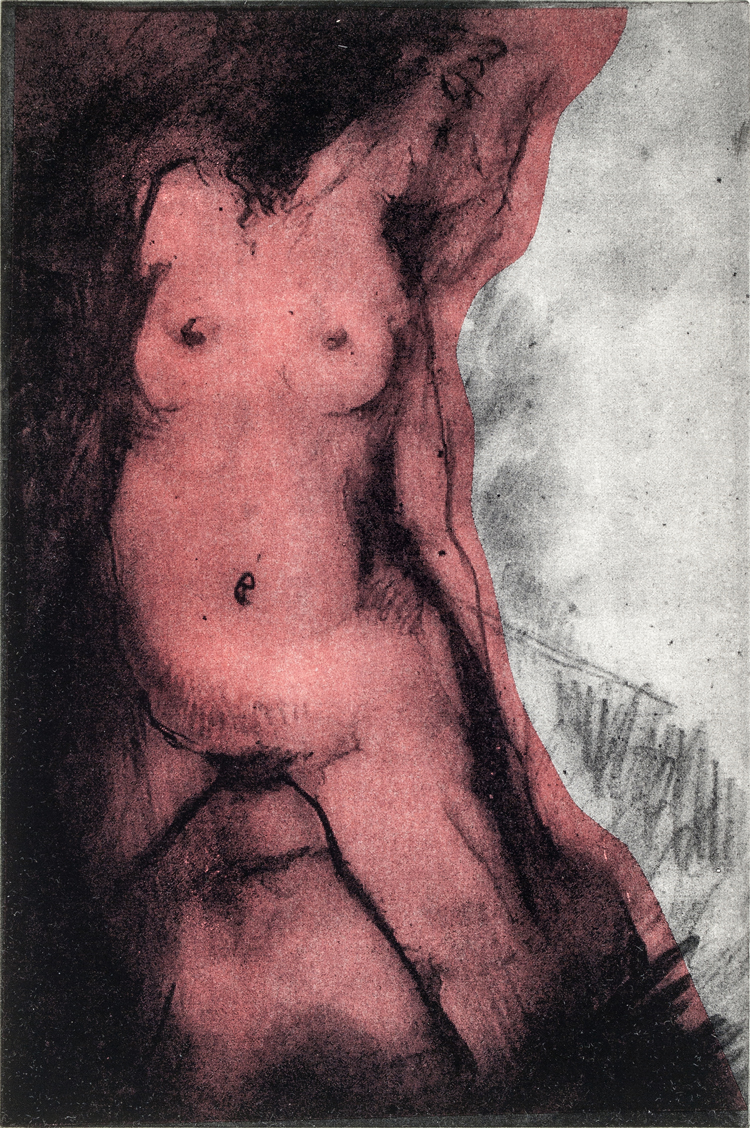
Robyn Smith, Scarlet Woman, Intaglio Solar Etching, 2017
(No of Edition: 5)
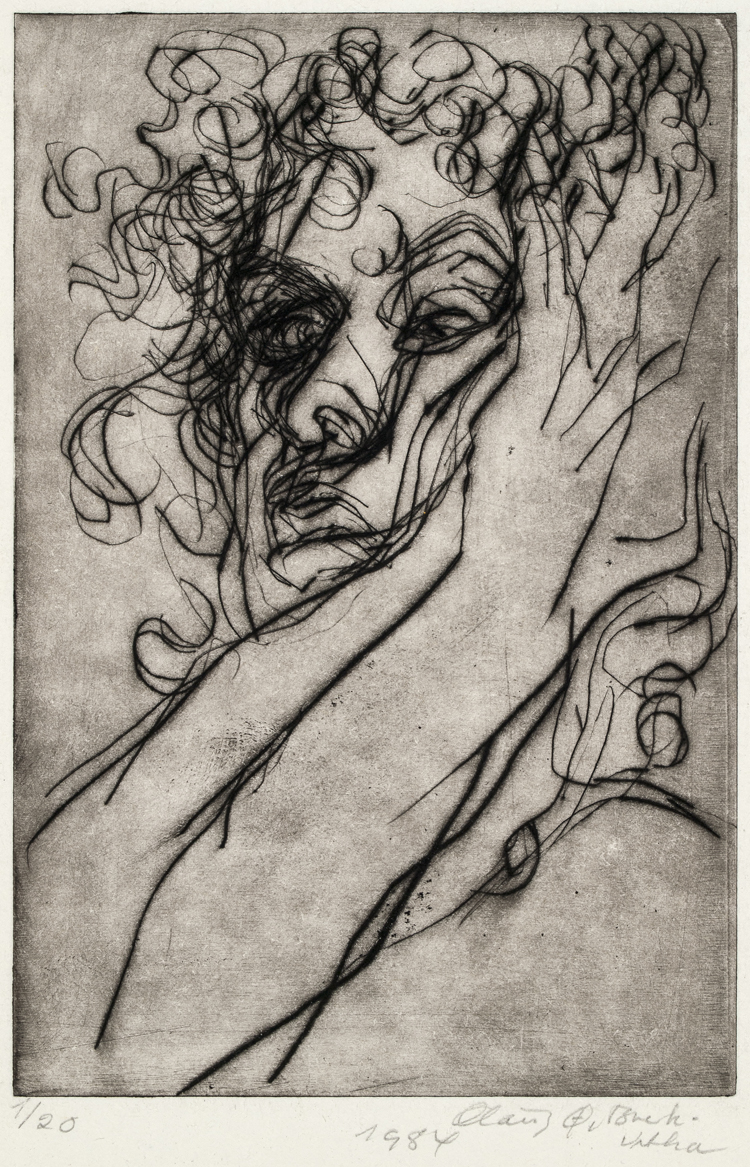
Olaug Vethal, Untitled, Drypoint, 1984
(No of Edition: 20)
JS: This was the first time that an original print exhibition was curated, as well as the first time that an original print exhibition focused on one printmaking process, intaglio.
EC: So, just to clarify matters, for this year’s show, you’ve excluded other print forms, and focused solely on prints which were carried out in the intaglio printmaking process?
JS: Exactly. If you had to look back to previous print exhibitions, you will see that they all comprised a combination of lithographs, lino, silkscreen (serigraphy) and intaglio prints. NONETHELESS, I would like to highlight that, our choice to focus on intaglio was not to restrict ourselves to one printmaking process – or to make the setting up and curation of the exhibition more manageable, so to speak – on the contrary, we decided to focus the exhibition on intaglio to show the public how rich, varied and complex it is as a printmaking method.
EC: In fact, when I was reading through the exhibition catalogue, I was impressed to find out that there are thirteen types of intaglio techniques: dry point, engraving, criblè, mezzotint, hard and soft-ground etching, aquatint, spite-bite…
JS: We wanted to provide the viewer with some background on the different methods of intaglio. The combination of techniques is extensive.
EC: To whom are you referring to when you say “we”?
JS: By ‘we’ I mean, Roderick Camilleri and myself; we worked together as a team along with printmakers Lino Borg and Justin Falzon. Nonetheless, I would like to clarify that, it was Roderick who curated this year’s show.
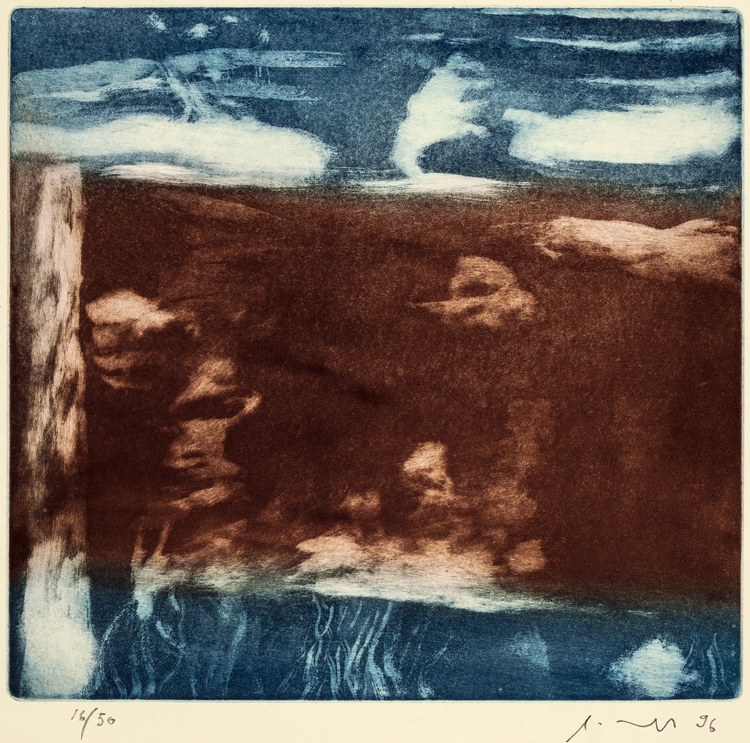
Richard Saliba, Untitled, Aquatint, 1995
(No of Edition: 50)
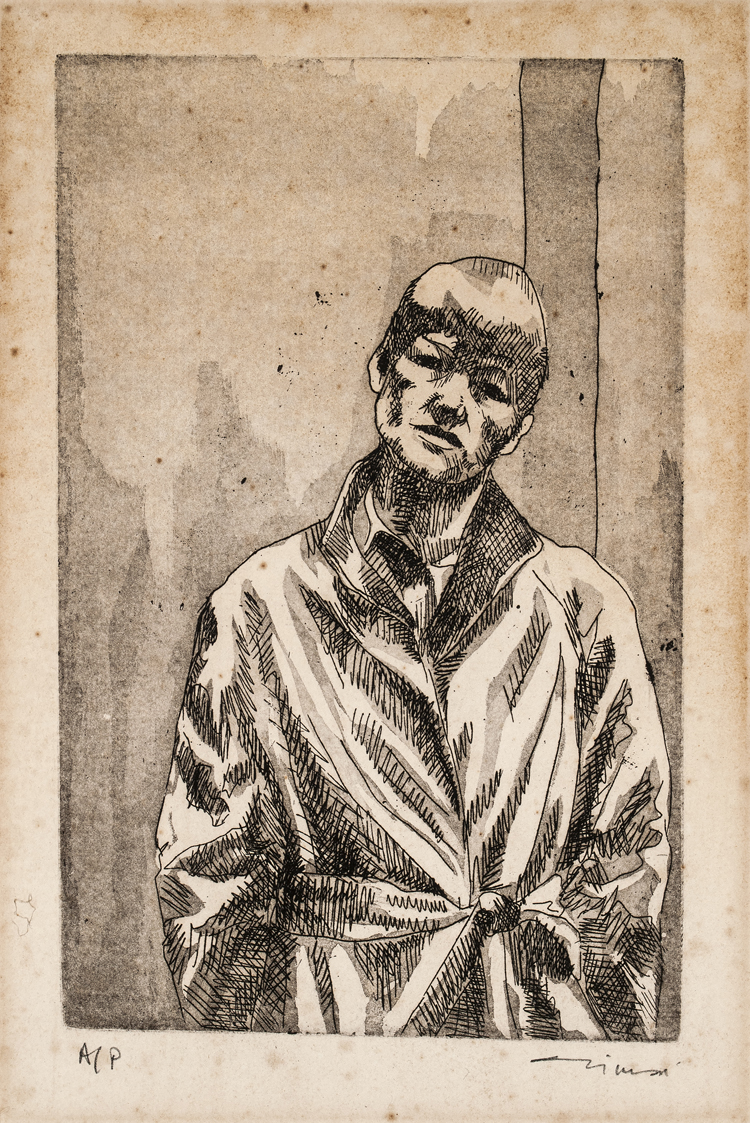
Eman Grima, Untitled, Etching and Aquatint, 1986
(Artist’s Proof)
EC: I noticed that iMprint III opened its doors to international participants…
JS: iMprint is creating a dialogue between local and international artists, so we’ve invited artists-print makers from different parts of the world to take part: Robyn Smith from Australia; Daniela Pili from Italy; Misaki Oguro and Tomiyuki Sakuta from Japan; Tazi Zaad and Moulay Youssef Elkahfaï from Morocco; and Caroline Koenders from the Netherlands. We also included the work of the late Norwegian artist Olaug Vethal.
EC: And what about the local artists-print makers, were there any new participants?
Js: Most of them have been participating since the Printcycle editions (these include Lino Borg, Austin Camilleri, Pawl Carbonaro, Justin Falzon, Luciano Micallef, Richard Saliba, Robert Zahra, John Vassallo and I). One of iMprint’s aims is to showcase working printmakers. Printmaking is a very demanding medium which requires an adequate and specific set up/equipment to undertake. As result, only a handful of artists commit themselves to the practice. Nonetheless, this year we did welcome on board other local artists: Eman Grima, Raymond Pitrè, and Irene Zammit.
EC: As I mentioned earlier, I enjoyed the fact that iMprint III featured prints by prominent 20th c. figures such as Marc Chagall, Gino Severini, Marino Marini, Victor Pasmore, Giuseppe Santomaso, Julian Trevelyan and Gianfranco Ferroni.
JS: Besides its international dimension, we sought to create a platform where established artists could relate with world-renowned artists working with intaglio techniques.
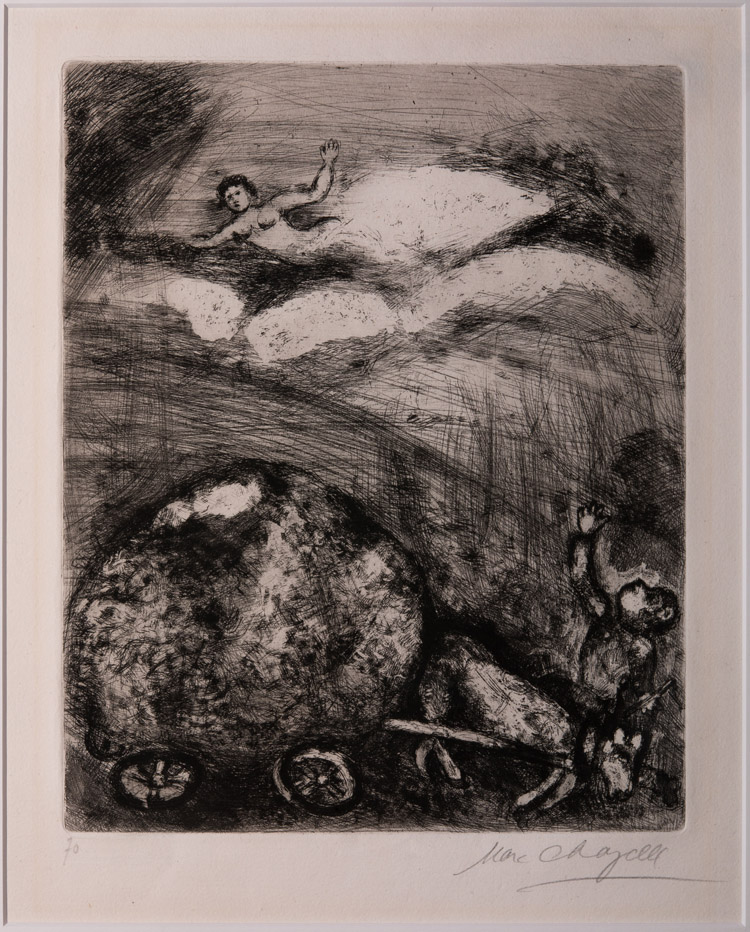
Marc Chagall, Le Charretier Embourbè, Aquaforte, Not Dated
(Edition and Registration No: 70)
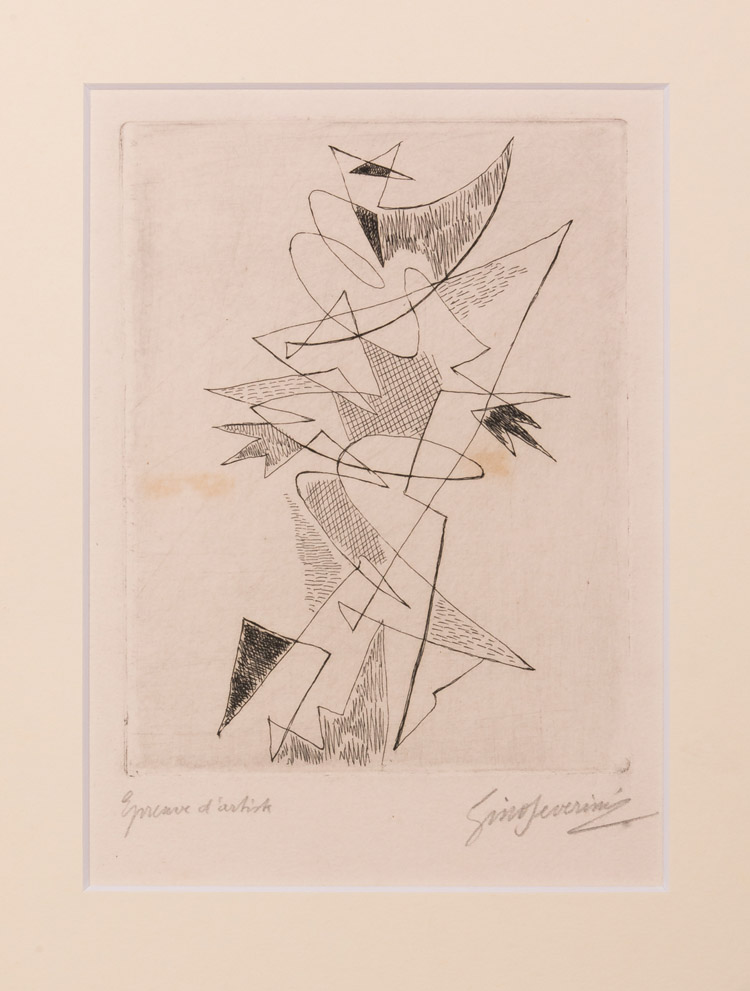
Gino Severini, Composition, Aquaforte, 1962
(Artist’s Proof)
EC: Why did you entitle the exhibition ‘iMprint III: Intaglio Creative Text’?
JS: Besides focusing on the technical aspects, Roderick wanted to showcase the creative side of printmaking.
EC: There were more than thirty prints on show; did they follow a particular subject matter?
JS: Well…when we had just started planning the exhibition, we were faced with the dilemma of whether or not we should create a subject matter. At the end, we decided not to.
EC: How come?
JS: If we imposed a subject matter, a lot of the exhibitors would have not been able to participate.
EC: So you left it up to the artists-print makers to decide which prints they wanted to exhibit?
JS: I never used to interfere in the selection process. However, this time round, Roderick thought it would be more suitable to ask them to provide us with a few examples of their works and choose accordingly. I mean, we did come across a few incidents where some of the artists couldn’t provide us with a selection of works, but it still worked out. Lino and Justin were also greatly involved in the selection process.
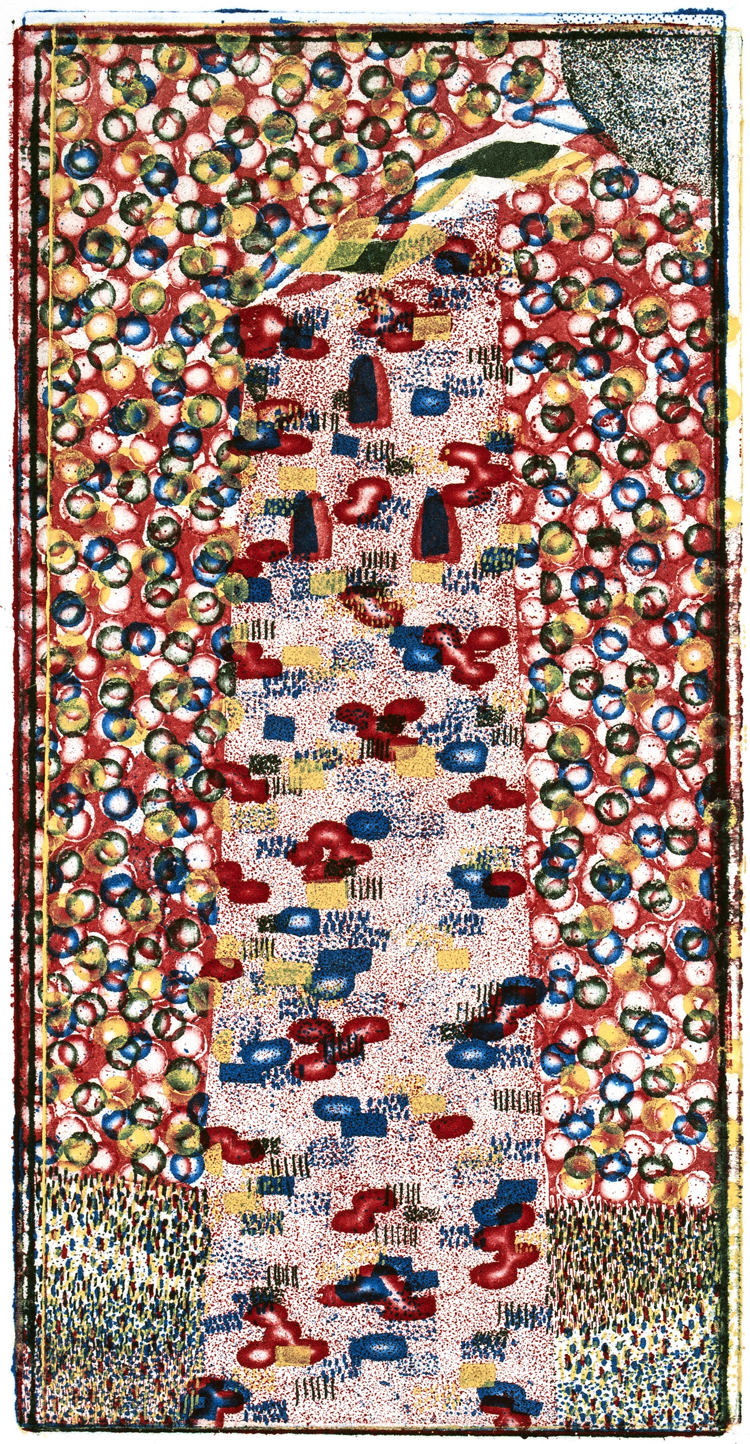
Misaki Oguro, When it Comes to One, Etching, 2004
(No of Edition: 30)
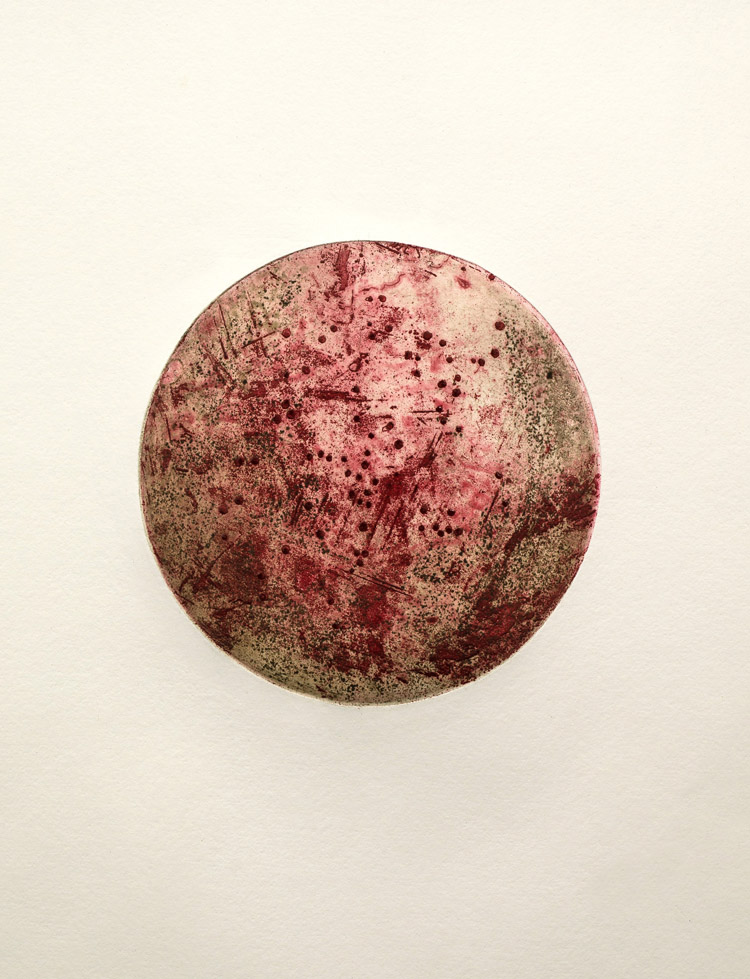
Austin Camilleri, The Phoenix, 2017
Aquatint, Soft-ground, Drypoint and Etching
(No of Edition: 35)
EC: Jes, I don’t know if it’s inappropriate to ask, but I’m going to ask either way as I’m curious… 🙂
JS: [Laughter]
EC: How did you manage to come across the original prints by Chagall, Severni, Ferroni…I mean, these are truly museum pieces!
JS: I remember receiving a phone call from Justin sometime around June, to inform us about a collection of 20th c. prints that he had seen exhibited at the time at Abraham’s Arte (Vini e Capricci) in Gozo. Justin insisted that “We should NOT miss it!”, so Roderick and I made sure to pay a visit. Lino and Robyn had also joined us.
EC: Thus, the 20th c. print collection had already been exhibited in another show?
JS: Some formed part of the same print exhibition that Justin had seen at Abraham’s Arte (the exhibition was called ‘Miti, Corpi, Luoghi: Il ‘900 Nel Segno Della Grafica’). Through a collaboration we did with Abraham, we also managed to bring new works by Gianfranco Ferroni, which have never been showcased on the island.
Justin was right when he told us that the exhibition “is worth a visit”. The quality of the prints is simply extraordinary. I still recall walking excitedly around Abraham’s exhibition space and whispering to Roderick “If only we could showcase these prints during iMprint!”
EC: And you’ve actually managed! 🙂
JS: Indeed. We had approached the curator of the exhibition, Valerio Ballotta, and asked him if he and Abraham would be interested to collaborate. Both Abraham and Valerio were enthralled by the news; they said that they’ve heard a good deal about iMprint and were willing to work with us.
EC: I am familiar with Abraham, but not with Valerio Ballotta…
JS: One day I will introduce you. Valerio is an experienced art curator; he has been active within the commercial and administrative sectors of important art galleries in Italy since 1997. His area of specialisation is modern and contemporary art, so I am sure you that you will enjoy meeting him.
EC: That would be great, thank you.
JS: We are really happy to have met Valerio. Like us, he shares a passion for prints and believes in its importance as an art form. Valerio also works closely with various professional galleries such as the Galleria Ceribelli of Bergamo in Italy. We finally met someone who speaks “our language”.

Gianfranco Ferroni, Autoritratto Seduto, Aquaforte, 1977
(Edition and Registration No: 50/60)
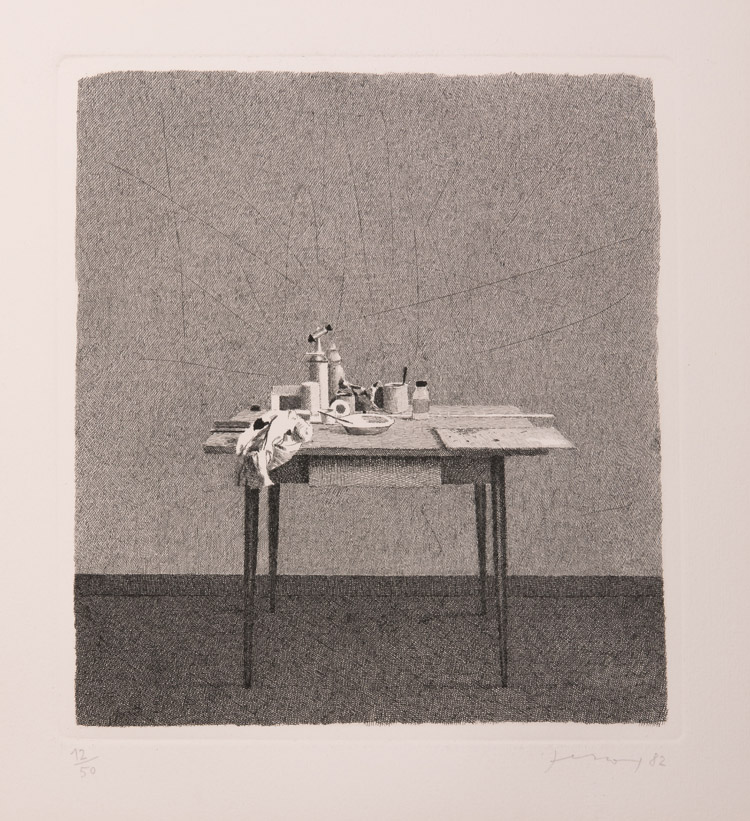
Gianfranco Ferroni, Tavolino, Etching, 1982
(Edition and Registration No: 12/50)
EC: Jes, once you had expressed your concern about the lack of print galleries in Malta.
JS: Gradually I came to realise that, for the time being, it would be more fruitful if printmakers, gallerists, museums, schools and other forms of art/educational systems had to work together to create an awareness and stimulate public’s interest in original prints.
EC: So, I guess it’s correct to say that iMprint’s aim (in general) is to spread knowledge of and appreciation for original prints… I have to admit that, it was thanks to the iMprint shows that I came to appreciate the art of printmaking.
JS: Printmaking is generally misunderstood, hence why we would like the public to become familiar with such a medium, its originality and particular artistic qualities.
EC: What was the most rewarding outcome of this year’s iMprint?
JS: The positive feedback, the comments, and the turnout were impressive. Moreover, through this exhibition we had a number of youth groups and schools visiting the show, giving it a strong educational aspect.
EC: To conclude, since the exhibition is now over, will the reader be able to view the works on another occasion?
JS: If everything goes as planned, we (Roderick, Valerio, Abraham and I) are planning to re-exhibit some of the prints at Abraham’s Arte around February 2018. We will provide you with all the details after the festive holidays.

Starting from left: Lino Borg, Jesmond Vassallo, Roderick Camilleri and Justin Falzon.

iMprint III: Intaglio a Creative Text @ Palazzo de La Salle Art Galleries (MSA), Valletta.
Starting from left: John Vassallo, Untitled, 2017; Misaki Oguro, When it Comes to Me, 2004; Austin Camilleri, The Phoenix, 2017; Raymond Pitrè, Untitled, 2009; Tomiyuki Sakuta, Howling, 2003.
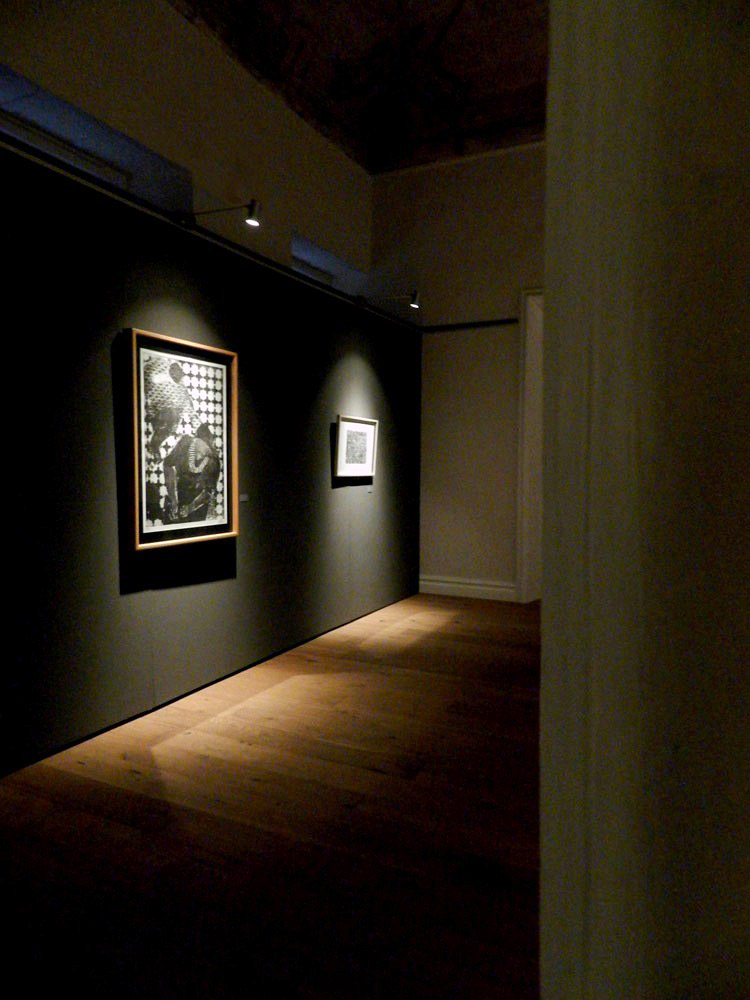
Starting from left: Moulay Youssef Elkahfaï, Family, 2016; Tazi Saâd, Endless Yet Counting, 2017.
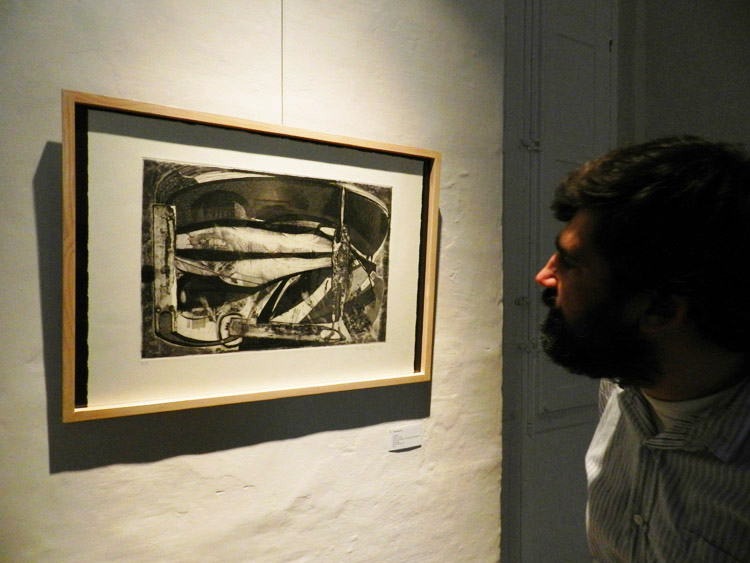
Jesmond Vassallo taking a peek at Daniela Pili’s Untitled (2011).
PHOTO CREDITS:
Martin Attard, Peter Bartolo Parnis, George Saguna (Prints)
Eve Cocks, Jesmond Vassallo & Roderick Camilleri (Exhibition Space)
FEATURED IMAGE: Pawl Carbonaro, Untitled, Aquatint,2009 (No of Edition: 80)
